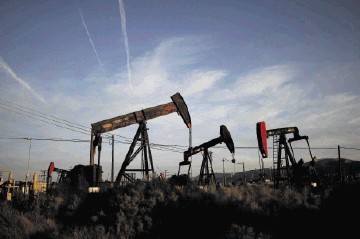
When dramatic change occurs quietly, there is always a danger that its significance will be correspondingly under-estimated.
That is surely true of the extraordinarily significant transformation that has been taking place in the energy outlook of the US due to the relentless march of shale fracking and other enhanced hydrocarbons recovery techniques.
This is a revolution that does not stop at the shores of America. The steady reduction of US dependence on oil and gas imports has truly global implications . . . economic, environmental and geopolitical.
If it can no longer be taken for granted that the US is going to be a captive market for oil and gas imports from sources like the Middle East and Venezuela, then the political dependency which accompanies that status is correspondingly reduced.
Uncomfortable allies may no longer have to be tolerated or ideological foes humoured. For better, worse or probably a mixture of the two, the freeing up of American foreign policy from oil-driven imperatives would certainly lead to a significantly different world order.
Even here in our own small corner of the planet, the ramifications will be significant. The entire edifice of economic assumptions surrounding Scottish independence rest on highly optimistic predictions about future oil and gas prices.
Yet we have already seen the knock-on effect of US fracking resulting in cheap gas which has, in turn, undermined the world price of coal to the point at which most of Europe’s – and certainly Britain’s – remaining domestic production has perhaps become non-viable.
As fracking of shales spreads, what happens to the price of oil? And that is not a question which applies only to the US. The world’s reserves, once these technologies are implemented more widely, will be transformed – and much of them will be in easier places to access than the deep waters of the North Sea.
If this year’s projected increase in production is close to the mark, US oil production will have increased by 46% over a three-year period.
As the New York Times recently pointed out, “there has not been a three-year increase that large since the years 1921-24”.
Last year’s production increase of 15.3% – equating to almost 900,000 barrels a day – was the highest since 1940. Gas production has risen 30% in a decade to its highest-ever level. And because gas prices are more localised, this has led to an unexpected recovery in American manufacturing industry.
The political implications of America’s transformed status are already being felt on a global scale. It has been argued, for example, that the US was able to step up sanctions on Iran because it felt less constrained by oil-related inhibitions.
This led to the election of the more pragmatic President Rouhani with the result that negotiations are now possible about Iran’s nuclear status.
It is not necessary to swallow whole such “cause-and-effect” scenarios in order to accept the general point. The more America is able to pick and choose where its remaining oil imports come from, the less need to pander to the interests of those on whom it has been most dependent.
Nowhere is that description truer than in Saudi Arabia which is likely to be overtaken in the coming year by the Americans as the world’s largest oil producer.
For the time being, the drop in demand from the US is compensated for by rising demand from Asia. But what happens next?
The longer-term fear for the Saudis and other Middle East producers is that these US shale fracking and associated technologies, and the know-how which has been accumulated, are exported world-wide and other countries, particularly China, start to emulate the same story of reduced import-dependency.
In the course of these past three years, the share of US demand for oil which is being met from domestic sources has increased from 40 to 60%. Production is now at its highest level since 1989 and is set to rise for at least the next few years.
As always, however, there is a negative side to the story. Cheaper oil and economic recovery have led to the first increases in US oil consumption in almost a decade. Indeed, that increase was higher than the overall rise in world consumption.
The environmental implications of that statistic are also enormous. America is still by far the world’s biggest consumer of oil, at over 20% of the total. At the same time, consumption in the growing economies like China, Brazil and India is rising sharply.
Against that background, European efforts to cut fossil fuel consumption tend to look rather more forlorn than we would wish to think.
Though here again, the fall-out from American fracking has its own capricious effect – which helps explain why our own emissions are rising rather than falling.
It is a much under-reported fact that coal is once again responsible for generating 40% of our electricity in the UK.
And it is almost all imported coal which is now so cheap because the American situation has depressed the world price to the point at which it has comfortably under-cut gas as the fuel of choice.
This will change to some degree next year with the introduction of tougher EU regulations on emissions from coal-fired power stations.
But the lesson is unmistakable – the market will opt for the cheapest option available to it, with scant regard for the environmental implications.
One wonders what the implications are for the offshore industry, and in particular mature, high-cost provinces like the North Sea. Something to mull on the sidelines if not in main open forum at this month’s Offshore Technology Conference in Houston perhaps.
Recommended for you
